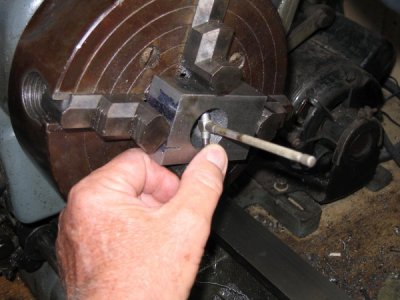Good posts above.
A couple more things. Using a telescoping bore gage is much more repeatably accurate when we can hold the gauge as square as possible to the bore axis, and rocking it through the diameter as square as possible and as centered as we can eyeball it. Side loading create errors. Using a bore gage while leaning way over, down, and sideways while reaching to make the pull is just asking for inaccuracy. Try to get in a comfortable position when you can clearly see straight down the bore how you are doing.
The other thing is not overtightening the telescopic gage. Doing so allows excessive forces to cause offset inaccuracies. Tighten it just enough to mic it reliably afterwards and without being able to squish the measurement with the mic. Over tightening also damages the gage, see the next paragraph.
Another thing is the telescoping gage itself. If it is an old cheap one, with rust on the parts, inside or outside. you are much more likely to have errors. If you gronk down on the screw and pull hard to get the gage through the bore, you are very likely galling the gage, which will make it less accurate for any user from then on. Beware of used telescoping gages, and ones with visible rust. I am not a tool snob, but my quite old Starrett telescoping gages still work like new and slide smoothly and evenly through the bore. I would never trade them for anything else, the newer ones are not as good as an older set used by a real pro regularly and cared for properly. Good work can be done with less good gages, but is not as repeatable and is more frustrating.
After using good gages carefully for some time to get used to them, it is quite possible to get consistent readings repeatable to a couple tenths on work that is easily accessible.
Practice makes perfect. I do not use telescopic gages regularly, so I practice for a bit to ensure repeatable results before measuring the money part.
Anybody can do it if they work at it and pay attention.


